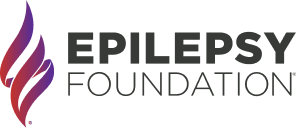Sturge Weber Syndrome Encephalotrigeminal Angiomatosis
What Is Sturge Weber Syndrome?
Sturge Weber Syndrome (SWS) is also known as encephalotrigeminal angiomatosis. It is a rare condition typically recognized at birth with an estimated incidence of 1:50,000. It affects males and females equally.
SWS can be classified into three different types:
- Type 1 (most common type) is characterized by port-wine stain, cerebral malformation (leptomeningeal angiomas), and the possibility of glaucoma or choroidal lesions. Seizures may occur during the first year of life. Developmental disabilities may be seen during the first year.
- Type 2 is characterized by port-wine stain and possibly glaucoma without cerebral malformation (leptomeningeal angiomas). Headaches or migraines may also occur.
- Type 3 is characterized by cerebral malformation (leptomeningeal angiomas) exclusively. Port-wine stain is not present and glaucoma is rare.
Other signs and symptoms of SWS can include intellectual disabilities, learning disabilities, attention deficit/hyperactivity disorder, headaches or migraines, unusual eruption of teeth or premature loss of teeth. There is higher incidence of autism and growth hormone deficiency in patients with SWS.
What Do Seizures In SWS Look Like?
Seizures in SWS usually start as partial or focal seizures that can spread to a generalized seizure. Some children will have eye deviation (eyes turn to one side), and tonic-clonic movements may occur typically on the side opposite of the port-wine stain.
Seizures are expected to be seen in 70 to 80% of patients with SWS and in up to 90% of patients with bilateral brain involvement. In 75% of patients, seizures will begin during the first year of life, with 80% by age 2 and over 90% by age 5.
Is SWS Inherited?
SWS is not a inherited condition. In the case of SWS, the condition arises as a result of an error in the development of the embryo. The error is the result of a mutation in the GNAQ gene that occurs randomly for no apparent reason.
How is SWS diagnosed?
The diagnosis of SWS is made clinically (through a complete history and physical examination) and with the help of specialized testing.
SWS is characterized by:
- the presence, usually at birth, of a face birthmark called port-wine stain that may involve one side of the forehead and upper eyelids or the whole side of the face
- glaucoma (seen in up to 70% of cases of SWS)
- brain malformation called leptomeningeal angiomas (85% of cases are on one side of the brain and 15% of cases are seen on both sides of the brain)
CT or MRI with contrast (Gadolinium) will show the leptomeningeal angiomas typically seen in patients with SWS. MRI brain with susceptibility weighted images (SWI) has proven to be very useful.
An ophthalmological evaluation (eye exam) is very important to help diagnose glaucoma or other eye problems. A complete eye examination and regular follow up visits with the ophthalmologist, especially in infants and children, is required.
An EEG (electroencephalogram) is recommended if there are concerns the child or adult is starting to have seizures. The EEG in children and adults with SWS will likely show abnormal spikes and slowing on one side of the brain, corresponding to port-wine stain.
How Is SWS Treated?
Treatment of patients with SWS is considered symptomatic (directed to the specific symptom). A team of specialists is frequently required and may include primary care providers, neurologists, neurosurgeons, dermatologists, ophthalmologists, and plastic surgeons. In addition to these specialists, patients with SWS may require behavioral, speech, occupational, and physical therapists.
Glaucoma is commonly treated with eye-drop medication. In rare circumstances of advanced glaucoma, surgery may be an option. It is very important to follow up with the ophthalmologist on a regular basis.
Port-wine stain can be treated with laser to lighten the color and decrease the size of the port-wine stain. Early treatment is beneficial and it can start within few weeks after birth.
Headaches/migraines can be treated with abortive and preventative medication.
Seizures/epilepsy is treated with anti-seizure medication. The goal of medication is complete seizure control to decrease chances of cognitive and or neurological decline.
Medications typically used for focal/partial seizures like oxcarbazepine (Trileptal), carbamazepine (Tegretol or Carbatrol), levetiracetam (Keppra), topiramate (Topamax), zonisamide (Zonegran), lacosamide (Vimpat), and others are often used.
Epilepsy surgery is an option for patients that become intractable (resistant to medication). Focal or limited resections and hemispherectomies are performed depending on the extent of the leptomeningeal angiomas and seizure onset region.
Other treatments have included the use of low-dose aspirin to reduce stroke-like episodes and seizures. In additional, clinical trial may be available; please visit www.clinicaltrials.gov to explore this option.
What Is The Outlook For Patients With SWS?
The outlook for patients with SWS is variable.
- Seizures can occur later in childhood, but this is not common.
- Glaucoma more commonly develops in infancy and less commonly in young adults.
- There is a high likelihood of seizures in patients with SWS, and intellectual disabilities are seen more frequently when seizures start before age 2.
- Patients with SWS can be mildly affected; however, some are severely affected with respect to seizures, vision, intelligence, weakness, and mobility.
- Older children may develop headaches or migraines.
- Bilateral brain malformations (leptomeningeal angioma), early onset of seizures, and difficult to control seizures are predictors of poor outcome.
Resources
Epilepsy Centers
Epilepsy centers provide you with a team of specialists to help you diagnose your epilepsy and explore treatment options.
Epilepsy Medication
Find in-depth information on anti-seizure medications so you know what to ask your doctor.
Epilepsy and Seizures 24/7 Helpline
Call our Epilepsy and Seizures 24/7 Helpline and talk with an epilepsy information specialist or submit a question online.
Tools & Resources
Get information, tips, and more to help you manage your epilepsy.


